- Home
- Ron Foster
The Savage Awakening (A preppers Perspective) Page 3
The Savage Awakening (A preppers Perspective) Read online
Page 3
Distilling method:
Add salt to pot still, stir to dissolve and let stand for 15 minutes (to assist with clear fractions).
Distil SLOWLY in a single run (to assist with clear fractions).
Discard heads
Collect heart
Collect tails in small bottles (i.e. 150ml) and mix back selected fractions into heart.
Post processing:
Bottle and infuse with oak chips for 2-8 weeks.
Add caramel to required color
Pour a dram and enjoy
“That’s cool as hell! Pot still huh? Well we don’t have one but our table top is better anyway. You didn’t tell him about it did you?” Dennis inquired.
“Hell no, I said I was making beer but he knows I know some other moonshiners in the county so us showing up with some whiskey to trade for some hog meat wont look suspicious to him later on. He is going to run a huge batch of bread whiskey himself and he said but for us to be on the lookout for sugar and such for him.” Charles replied.
“ The hell with him, you find any sugar or grain it goes in our stockpile first. How many hogs does he have?” Dennis asked.
“He said he has around 40 but he is short on feed for them, course hogs can be put out in the woods also if he had to so they can forage. Getting back to the whiskey for a minute though, Monica knew that girl that owned the cake decorating place so we went by her house and got her to sell us some sugar and cake flour. I traded her 5 gallons of gas for it. She is getting ready to go to her Uncles house until this shit blows over or the city burns down by the way. I got a hell of a deal on 200 lbs of sugar and 150 lbs of flour because she didn’t have room to take it with her in her car. What can you make out of that kind of flour besides cakes anyway?” Charles asked.
“I don’t know, whiskey if nothing else I guess.” Dennis said grinning.
“Hello there Dennis!” Monica said walking towards them carrying a big washtub looking pan to collect the meat in for further processing.
“Hey Monica! Charles just told me you counted coup on some sugar! Good find, you going to bake us a cake?” Dennis said chuckling
“Actually I thought we could give it a try. You have a Dutch oven right? “Monica said smiling and getting ready for a little prepper lore. If there was one thing Dennis loved to do was talk about prepping.
“ Yes I do, actually I have several different sizes but not for the reasons you might think. I like to do what is called “Stack cooking” in them .
When cooking several different dishes at the same time, stack the pots to save space and briquettes. Stacking works best if you put the food to be baked at the bottom of the stack and add Dutch ovens with shorter cooking times on top. Food to be sautéed is in the smallest oven at the top of the stack. Always stack the largest Dutch oven at the bottom and decrease in size as you stack. Add three briquettes to the number of inches of each pot and put that many briquettes on each lid.
"Stacking" your Dutch ovens is a convenient way to save space and share heat. Stacking is best done when ovens need the same amount of heat on top and bottom. (I.E. - Do not mix and match ovens that require different amounts of heat on top and bottom. Placing an oven with a cake, pie, or rolls in it, on top of an oven loaded with coals on the lid is not a very good idea
Paul Kautz the “Dutch Oven Dude” shared some tips with us.
Temperature Control
On my dutch oven, there's no dial, nothing to tell me how hot the oven is. Since cooking food at a fairly consistent and known temperature is important for success, there are 3 ways I know of for estimating temperature. Depending on your skill level and how you'll be cooking, one of them should work for you.
Also keep in mind that there are many environmental factors that will influence your oven temperature. Wind might blow heat away; colder air temperature, higher humidity and higher elevation reduce heat generated by coals; direct sunlight makes a black oven a bit hotter. You might consider making an aluminum foil wind shield to place around your oven, but if it is that windy, I would recommend you not have an open fire.
Nearly all dutch oven cooking will come out ok if your dutch oven is about 350 degrees. Some things should be cooked hotter and some cooler, but that's the temperature for all recipes that fail to include a temperature suggestion.
Hand Test
Use your hand to feel the heat. Of course, every person has a different sensitivity to heat but this works well for me. Just remove the lid from the dutch oven and place your hand just above or just inside the oven. Count how many seconds you can keep your hand there before it gets too hot. It is about 50 degrees per second counting down from 550, so I just count - "550, and 500, and 450, and 400, and 350, and 300, ...".
Seconds
Temperature
1
500+
2
500
3
450
4
400
5
350
6
300
7
250
8
200
This is my preferred method. It is consistent and detects temperature instead of estimating the amount of fuel. You do release heat so you need to do the check as quickly as you can.
Counting Charcoal
Lots of dutch oven cookbooks tell you how many charcoal briquettes to put under and on top of the oven. This is the easiest way to cook since every coal is similar and consistent. If you are like me and use real wood for your outdoor camp cooking coals, it doesn't help much. Also, different brands of charcoal give off different amounts of heat. But, let's say you are going to use charcoal...
The normal formula is to use twice the number of briquettes as the diameter of the oven. For a 12 inch oven, you would use 24 briquettes. Depending on the type of cooking you are doing, you need to make the heat come more from the top or bottom of the oven. For example, too much heat on the bottom will burn bread.
To do this, you place more or less of the briquettes on the lid.
Here is a simple chart:
Baking
More heat from top so bottom does not burn.
Place 3/4 coals on top and 1/4 underneath.
Roasting
Heat comes equally from top and bottom.
Place 1/2 coals on top and 1/2 underneath.
Stewing, Simmering
Most heat from bottom.
Place 1/4 coals on top and 3/4 underneath.
Frying, Boiling
All head from bottom.
Place all coals underneath.
Most baking recipes require a temperature setting of 325ºF. An easy method to get a temperature of 325ºFahrenheit within your Dutch oven is to subtract or add the number 3 to the size of your Dutch oven to determine the number of charcoal briquettes to use underneath and on top. Find the size of the Dutch oven you use (see chart below) to know the correct number of briquettes.
Dutch Oven 325° Temperature — Briquette Quantities
Size of Oven Top Bottom
8-inch 11 5
10-inch 13 7
12-inch 15 9
14-inch 17 11
16-inch 19 13
The following example uses the formula for a 12-inch Dutch oven.
* Subtract 3 from 12, which equals 9 — the number of briquettes to place beneath the oven.
* Take the number 12 and add 3, which equals 15 — the number of briquettes to place on the lid of the oven.
With this formula, 9 briquettes go underneath and 15 briquettes are placed on the top of the lid of a 12-inch Dutch oven to cook at 325ºF. One-third of the heat will be underneath the Dutch oven, and two-thirds of the heat will be on top. Heat rises, so you do not need as many coals on the bottom of the oven.
Arrange briquettes so they are evenly spaced under the Dutch oven and on its lid. Also, you always need to rotate your Dutch oven a quarter turn every 15 minutes to avoid hot spots. Replace briquettes with new coals as they burn out.
Temperature control is determined by charcoal briquette placement
Rule of 3
This is a real simple estimate of briquettes. Take the dutch oven diameter and add 3 briquettes on top. Subtract 3 briquettes underneath. So, a 12 inch oven would have 12+3=15 on top and 12-3=9 underneath. This works for any size dutch oven. Then you need to adjust briquette placement depending on the type of cooking.
Rings of Coals
As it turns out, the sizes of briquettes work out so that the recommended briquettes count above can be estimated easily. As an experiment, you can take a 12 inch dutch oven and 24 briquettes. On the lid, make a ring of briquettes all the way around the outer edge. How many did you use? I bet it was 15 or 16!
Now, see how many it takes to make a ring just under the oven. There should be 3 or 4 briquettes between each leg for a total of 9 to 12.
That is pretty close to the recommendation for a 350 degree roasting set up, isn't it? It works pretty well for any size dutch oven and any size briquettes - smaller briquettes means you need more of them, but its about the same amount of burning mass to make a ring!
A ring around the top and the bottom is about 325 to 350 degrees.
Remove every other briquette underneath to make 300 degrees.
Add a second ring to the top to make 375 degrees.
If your camp cooking calls for stewing or frying, you'll want to drop most of those top coals down and shove them under the oven. If you're baking breads, then maybe move a couple from underneath up to the top.
Just remember that a ring around the top and a ring around the bottom is your base starting point and tweak it from there.
Oh, I forgot to mention that this is exactly how I do it with real wood coals. Since coals are irregular and you can't count them, I put a ring of coals around the top and bottom and it works out practically perfect. I'm lazy and like the simplest way to do something. :-)
Maintaining Even Heat
No matter how evenly you distribute your coals above and below your dutch oven, there will be some spots that get hotter than others due to wind, quality of fuel, and phase of the moon. To prevent burned and raw portions of your meal, you should just rotate your oven occasionally, maybe every 10 minutes. You can do it however you like, but I've got an easy way - remember, I'm lazy.
Lift the whole oven off the campfire cookin coals by the wire bail.
Turn the oven clockwise 1/3 of a revolution.
Set the oven back down on the coals - with three legs on your oven, it should sit in the exact same spot it started in with coals between the legs.
With a lid lifter or pliers, grasp the lid handle.
Twist the lid counter-clockwise 1/3 turn - the logo on the lid should be in the same position it started at.
I like this way because both the top and bottom heat moves in relation to the food inside and there's nothing for me to remember except that the lid logo always looks the same.
Taking a quick look inside at this time will give you an idea if the coals are cooking too fast or slow. Just be careful to not drop ash in or let heat out.
Maintaining Long Heat
Your first batch of coals will probably keep the oven hot for 30 to 45 minutes. That's long enough to cook most things, but you sure don't want to let the oven go out for those 1 hour or longer meals.
Just make sure you check your oven every 20 or 30 minutes to see that the coals are ok. Where you see spaces with just white ash, fill in with a few more coals. Or, you can just brush all the ash and coals away and put on a new batch all at once. If we're just sitting around the campfire cooking s'mores, talking, or playing cribbage, I tend to do the former but if the fish are biting I do the latter so I don't need to keep checking on it.
Stacking Heat
When you really get going and have 3 or 4 dutch ovens outdoors cooking, there is a lot of ground space chewed up and a large part of the heat from the coals is heating the surrounding countryside instead of the ovens. I recommend that the first dutch oven you buy is a 12 inch model and then your second purchase is a 10 inch model. This allows you to stack the ovens.
Stacking your dutch ovens is a great way to save ground space, fuel, and time - besides, it looks really cool to have 3 ovens making a tower.
The coals on the lid of one oven serve as the 'underneath' coals for the oven stacked on top. And, the oven on top helps trap heat for the oven underneath. All this makes heat estimating more difficult so you should only tackle this after you've got some experience and are willing to practice on a few meals.
The most important thing to remember is that items needing more heat should be on top. Your bread or dessert should be the bottom-most oven since it wants very little heat underneath. Then, your meat to roast in the middle and a stew on the top. It takes some planning, but an entire meal can be fixed this way so it all gets done at the same time.
Rotating stacked dutch ovens takes a bit more work. Take off the top ones, rotate the bottom one, and then work your way back up the stack. Move as fast as you can without spilling so you keep the ovens hot.
Temperature Tips
Finally, just a few tips to tuck away for later:
You can cook food, but you can't unburn food. Use less heat and cook longer rather than overheating.
Preheat your dutch oven for frying or searing meat. Otherwise, put the food in cold and let it all heat up together.
Keep adding wood to your campfire to ensure you have a supply of camp cooking coals available. If your fire burns too low, it may take extra time to finish your cooking while you make coals.
Some briquette users just set new briquettes next to burning ones around the dutch oven so they light and continue providing heat as the first batch burns out.
“ Damn Dennis you expect me to remember all that?” Monica fumed while chiding Dennis for being so long winded about a simple question.
“Nope I don’t expect you to remember, that’s why it’s written down in one of my books at home for you!” Dennis said with a grin.
“Which reminds me, I cant stay to long and mom asked if you would help her sort out my kitchen cabinets.” Dennis said and proceeded to get the couple to help him unload his truck of the dehydrated food he was giving them and advising Monica she was getting some can goods also for helping his mom out.
“You don’t have to give us any can goods Dennis, I would be happy to help your mom out.” Monica objected.
“I know you would! I am sorry, I just termed it wrong. What I meant was you could help her sort out the first batch we are sharing and get things inventoried so we can figure out the next.” Dennis said diplomatically.
“You sure guy? We got enough food to last us awhile and I never expected all that dehydrated food you just gave us.” Charles asked as if it all was too generous.
“No problem my friend, you and I made a pact long before this day to help each other if the SHTF, it has so plan A is in full effect.” Dennis said reassuring him and then he thanked him again for being there for him and supporting all his efforts.
“Meats done Dennis, you want to go fetch your mom and eat here or you want to eat over at your house?” Monica asked.
“Well any other time I would say I would bring her over to get acquainted with your place and the dogs but she is waiting on you Monica so we better go down their pretty soon. What is yours and Charles schedule? You want to stay here awhile or comeback with me?” Dennis asked.
“I want to come back with you, Dennis and help your mom after we eat breakfast over there. Charles are you coming or do you have something you have to finish here?” Monica asked as she covered up the meat container with foil.
“I got about a bazillion things to do here starting with all that bread but I have time for breakfast and can walk back up, that is if you don’t have something more pressing to help you with Dennis?” Charles said while closing all the vents on the grill and its attached smoker to shut down his fire.
“ I was going to start g
etting my garden beds ready today and start on a few other things but you have me intrigued about a few of the stores being open in town.” Dennis said debating if he should of already left to go check them out.
“Like I said there isn’t hardly anything left on the grocery shelves? Wal-Mart’s is open but I didn’t go there and I am not sure they would be selling anyone ammunition anyway. I can probably assure you they don’t have any propane or kerosene left. The grocery store had a limit of one basket or $100 of goods. I got a cart and paid cash and Monica used up her food stamps so we managed to get some stuff. We got a weird conglomeration of stuff by the way. There were limits on everything you could buy if they still had it and you can’t buy pet food on food stamps so I bought mostly pet food and Monica fought with folks over the remaining cans of Chef Boyardee and anything else she could get. I am glad we had those discussions about what to grab on small money that might be available after a run on a grocery store in a situation like this or we would have been lost. I did get some cooking oil, Crisco, salt and flour though. We went to the grocery store first before I got all that bread and flour.” Charles said sheepishly.

 Spectre Island- Time Is Running Out!
Spectre Island- Time Is Running Out!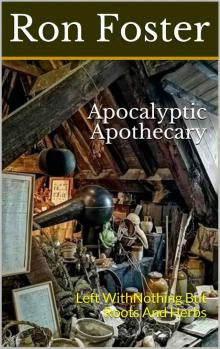 Apocalyptic Apothecary
Apocalyptic Apothecary Our End Of The Line
Our End Of The Line Fades The Light: The Prepper Reconstruction
Fades The Light: The Prepper Reconstruction Clem's Contrivance: Terrorist Fiction In The Deep South (The Apocalyptic Rifle Book 1)
Clem's Contrivance: Terrorist Fiction In The Deep South (The Apocalyptic Rifle Book 1) Diary Of A Kudzu Salesman: Survival And Recovery After The Electrical Grid Collapse (Prepper Reconstruction Book 2)
Diary Of A Kudzu Salesman: Survival And Recovery After The Electrical Grid Collapse (Prepper Reconstruction Book 2) The Ridiculously Simple Survival Book
The Ridiculously Simple Survival Book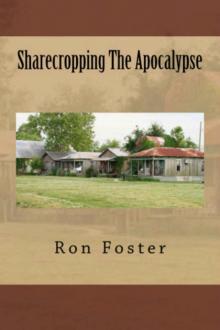 Sharecropping The Apocalypse: A Prepper is Cast Adrift
Sharecropping The Apocalypse: A Prepper is Cast Adrift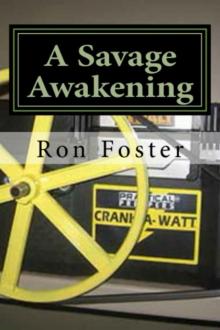 The Savage Awakening (A preppers Perspective)
The Savage Awakening (A preppers Perspective) The Great Unraveling (A Preppers Perspective Book 1)
The Great Unraveling (A Preppers Perspective Book 1) An Old Man And His Axe: A Prepper fiction book of survival in an EMP grid down post apocalyptic world (Old Preppers Die Hard 1)
An Old Man And His Axe: A Prepper fiction book of survival in an EMP grid down post apocalyptic world (Old Preppers Die Hard 1) Shadows Of Sanity And Survival (Old Preppers Die Hard Book 3)
Shadows Of Sanity And Survival (Old Preppers Die Hard Book 3)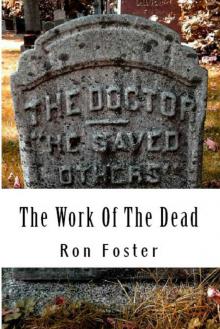 The Work Of The Dead: A Post Apocalyptic Prepper Fiction Series (Aftermath Survival Book 1)
The Work Of The Dead: A Post Apocalyptic Prepper Fiction Series (Aftermath Survival Book 1)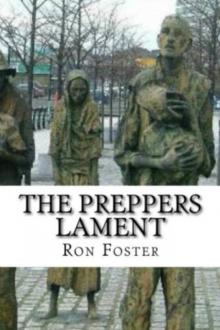 The Preppers Lament
The Preppers Lament Our End Of The Lake: Surviving After The 2012 Solar Storm (Prepper Trilogy)
Our End Of The Lake: Surviving After The 2012 Solar Storm (Prepper Trilogy) Beyond The Burning Shore: Searching For Survival
Beyond The Burning Shore: Searching For Survival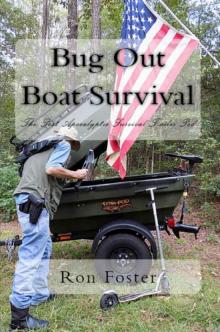 Bug Out Boat Survival: The Post Apocalyptic Survival Trailer Pod (Aftermath Survival Book 3)
Bug Out Boat Survival: The Post Apocalyptic Survival Trailer Pod (Aftermath Survival Book 3)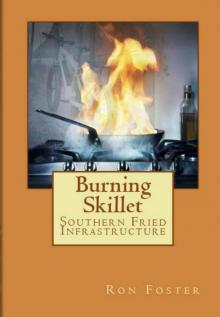 Burning Skillet: Southern Fried Infrastructure (Grid Down Prepper Up Book 2)
Burning Skillet: Southern Fried Infrastructure (Grid Down Prepper Up Book 2) The Solitary Man’s Refuge
The Solitary Man’s Refuge A Pox Upon Us
A Pox Upon Us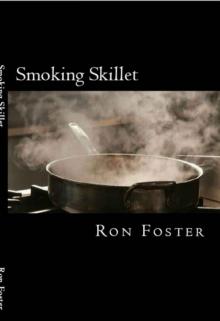 Smoking Skillet
Smoking Skillet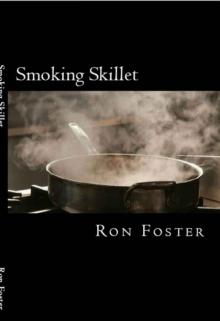 Smoking Skillet: A Recipe For Societal Collapse
Smoking Skillet: A Recipe For Societal Collapse Empty Aisles & Empty Hearts (Preppers Perspective Book 3)
Empty Aisles & Empty Hearts (Preppers Perspective Book 3)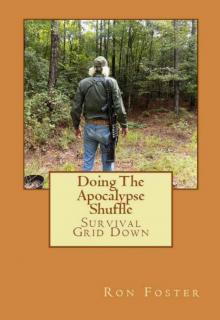 Doing The Apocalypse Shuffle: Southern Prepper Adventure Fiction of Survival Grid Down (Old Preppers Die Hard Book 2)
Doing The Apocalypse Shuffle: Southern Prepper Adventure Fiction of Survival Grid Down (Old Preppers Die Hard Book 2)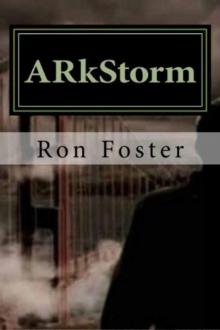 ARkStorm: Surviving A Flood Of Biblical Proportions
ARkStorm: Surviving A Flood Of Biblical Proportions